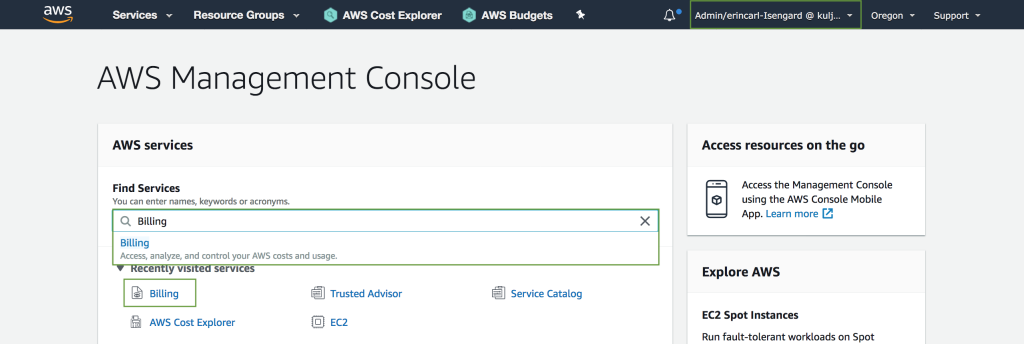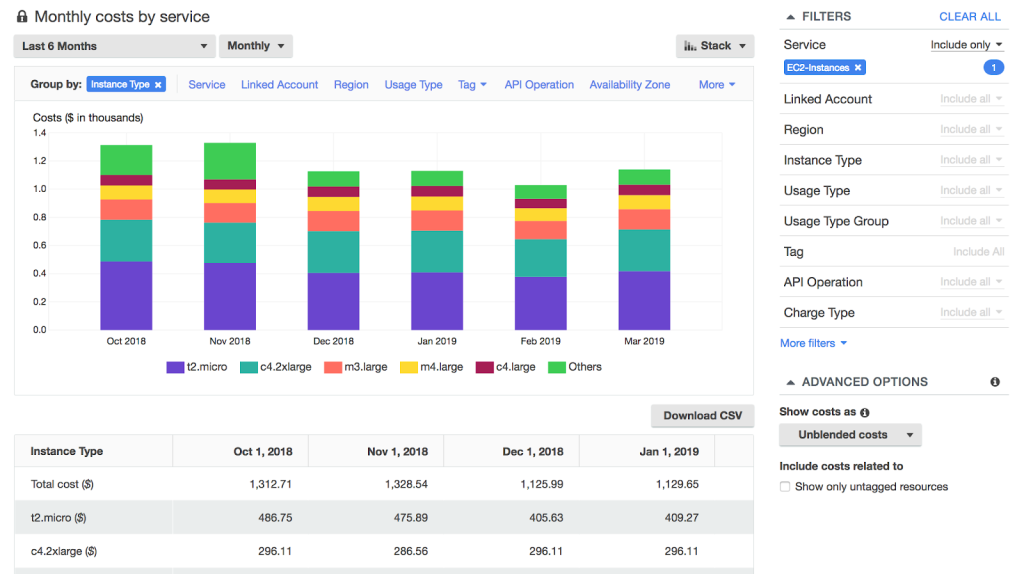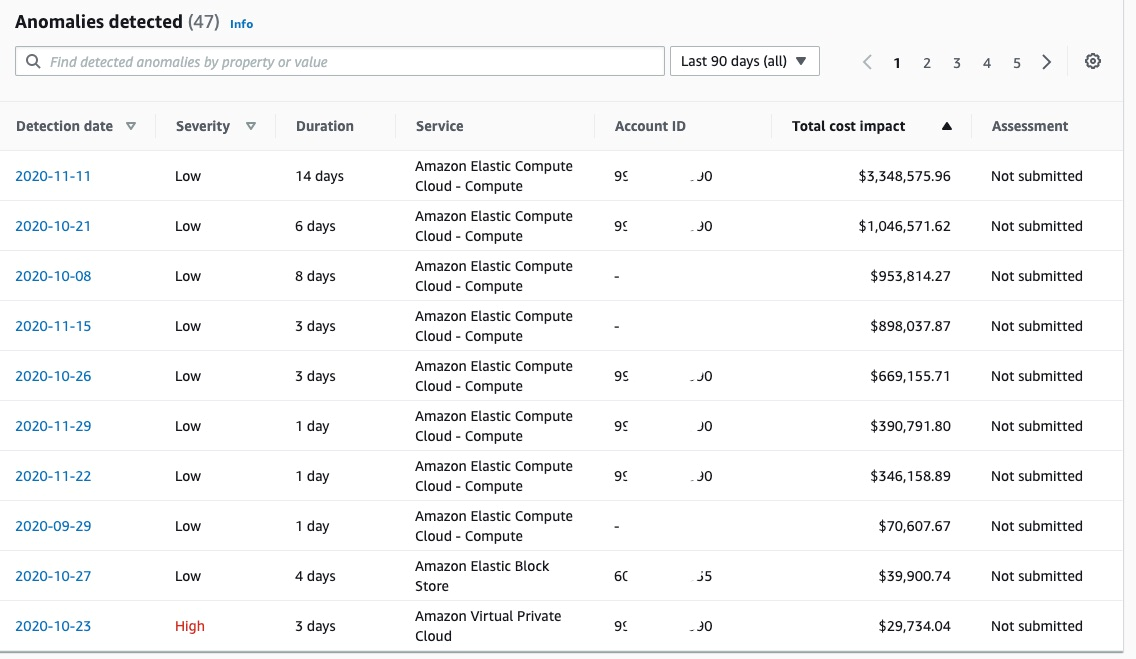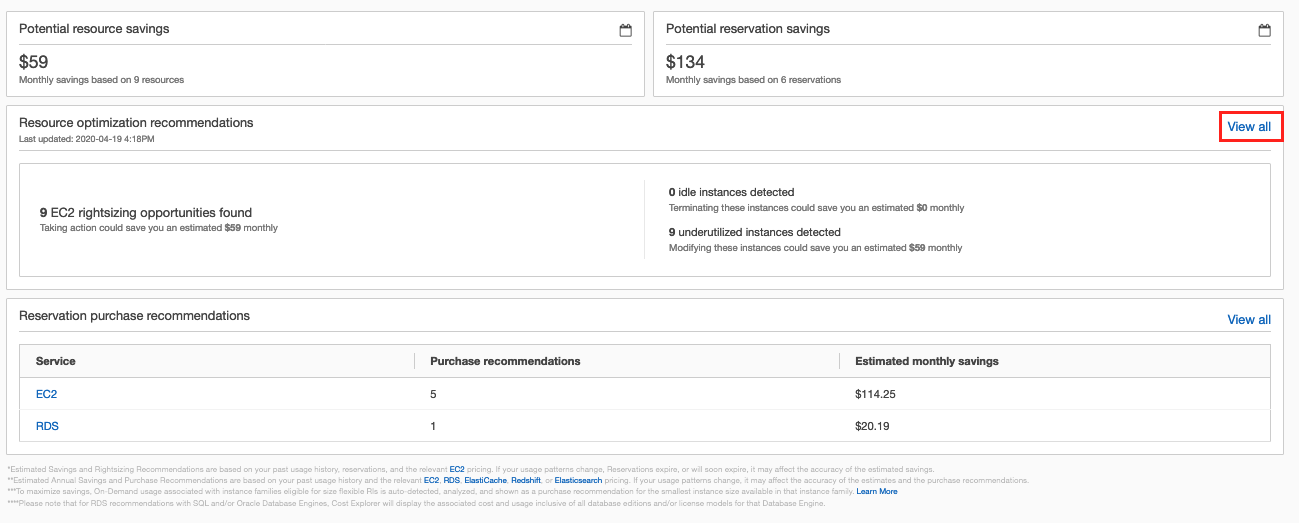What Is AWS Cost Management?
AWS Cost Management has two common meanings:
- A web service provided by Amazon that helps you pay bills and optimize costs for your AWS account. The service provides features for budgeting, forecasting costs, and optimizing pricing to reduce your overall AWS bill.
- Tools and practices used by IT professionals, financial analysts, resource managers, and developers to access detailed information about their AWS costs and usage. The goal is to analyze their cost drivers and usage trends, and take action on their insights to optimize costs.
The AWS Cost Management suite of tools provides visibility into your AWS usage and costs, enabling you to understand your spending patterns, identify cost drivers, and implement cost-saving measures. It also provides forecasting capabilities that can help you predict your future AWS costs. We’ll cover the tools included in AWS Cost Management in more detail below.
In relation to the general practice of managing cloud costs, AWS cost management is about moving away from a reactive approach to cost management, where you are constantly playing catch-up with escalating costs, to a proactive approach where you are in the driver’s seat, making strategic decisions that optimize your AWS spending. We’ll provide a series of best practices that will help you make this transition and improve control over your cloud costs.
This is part of a series of articles about AWS cost optimization
In this article:
- Importance of AWS Cost Management
- AWS Cost Management Tools
- Strategies and Best Practices for Managing AWS Cost
- Automatically Optimizing Cloud Costs with Spot
Importance of AWS Cost Management
Here are a few reasons it is critical to manage your costs on AWS:
Cost Optimization
With AWS cost management, enterprises can gain insights into their AWS costs and usage and leverage these insights to identify opportunities for cost savings. They can pinpoint underutilized resources, eliminate wasteful spending, and optimize their AWS costs.
For example, you can identify EC2 instances that are not being fully utilized, and these instances can be resized or shut down to save costs. Similarly, you can reveal data transfer costs that are higher than expected, prompting you to review your data transfer strategies.
Predictability
AWS cost management tools and practices can predict your future AWS costs based on past usage patterns. This predictability can help you budget more accurately for AWS resources, avoid cost overruns, and ensure that your AWS spending aligns with their business objectives.
Resource Optimization
AWS cost management tools and practices can provide detailed insights into how your AWS resources are being used. This visibility can help you optimize your resource usage, ensuring that you are getting the most out of your AWS investment.
Effective Governance
AWS cost management is also instrumental in effective governance. It allows you to set up robust governance mechanisms around your AWS spending. You can set up budgets, establish alerts, and create policies that govern your AWS usage and spending.
AWS Cost Management Tools
The following are free tools provided by AWS which can help you manage and control your cloud costs.
AWS Cost Management Console and the Billing Console

Source: AWS
The AWS Cost Management Console and the Billing Console are the primary interfaces for managing your AWS costs. They provide a comprehensive view of your AWS costs and usage, and offer a variety of tools and features for analyzing your spending patterns.
For instance, the AWS Cost Management Console provides a dashboard that summarizes your AWS spending. It includes a cost and usage report that breaks down your spending by service, account, and region. Similarly, the Billing Console offers detailed billing reports, and allows you to set up cost allocation tags that can help you track your AWS costs at a granular level.
AWS Cost Explorer

Source: AWS
AWS Cost Explorer is another powerful tool in the AWS Cost Management arsenal. It provides a visual interface for analyzing your AWS costs and usage. With AWS Cost Explorer, you can view your historical costs, forecast your future costs, and identify trends in your AWS spending.
For example, you can use AWS Cost Explorer to identify the services that are driving your AWS costs, the accounts that are incurring the highest costs, and the regions where your costs are concentrated.
AWS Budgets

Source: AWS
AWS Budgets is a feature that allows you to set custom cost and usage budgets. You can create budgets at the level of your entire AWS account, or for specific services or cost allocation tags. Once you set a budget, AWS Budgets will track your actual costs and usage against your budget and alert you when your actuals exceed your budgeted amounts.
AWS Cost Anomaly Detection

Source: AWS
AWS Cost Anomaly Detection is a tool that uses machine learning to continuously monitor your spending patterns and detect unusual cost or usage activity. Once an anomaly is detected, the service sends an alert, allowing you to quickly identify and address the issue. The beauty of this tool is that it effectively eliminates the need for manual monitoring, saving you time and preventing unnecessary costs.
Rightsizing Recommendations

Source: AWS
Another powerful feature of AWS Cost Management is rightsizing recommendations. This tool analyzes your usage over time and provides recommendations for how you can modify your resource configurations to save money. These recommendations might include downsizing an overprovisioned resource, switching to a different instance type that better fits your workload, or even moving a workload to a more cost-effective service.
Savings Plans
AWS Savings Plans are a flexible pricing model that provides significant savings on AWS compute usage. With Savings Plans, you commit to a certain level of compute usage, measured in dollars per hour, for a term of one or three years. In return, you receive a discount on your compute usage. This can be a highly effective way to reduce your AWS costs, especially if you have predictable, steady-state workloads.
Learn more in our detailed guide to AWS cost savings
Strategies and Best Practices for Managing AWS Cost
While the above features and tools can be helpful, they are most effective when used as part of a broader cost management strategy. Here are several strategies and best practices for managing your AWS costs:
1. Right-Size Resources
Right-sizing your resources can lead to significant cost savings. This involves regularly reviewing your resource usage and adjusting your resource configurations as needed to ensure they are most cost-effective. Remember, overprovisioning can lead to unnecessary costs, while under-provisioning can lead to poor performance or service disruptions. The key is to find the right balance.
2. Delete Unused Resources
It may sound simple, but one of the easiest ways to reduce AWS costs is to delete unused resources. AWS charges for resources as long as they are running, even if they are not being used. Regularly reviewing and deleting unused resources can result in substantial cost savings.
3. Use Spot Instances
One of the most effective ways to reduce AWS costs is to use spot instances. Spot instances are spare Amazon EC2 compute capacity that you can bid on at a significant discount compared to on-demand prices. However, they can be shut down with two minutes’ notice. When used effectively, spot instances can greatly reduce cloud spend, especially for workloads that are flexible, fault-tolerant, or not time-sensitive.
4. Cost Allocation Tags
Another useful strategy for managing AWS costs is to use cost allocation tags. These are user-defined tags that you can attach to AWS resources to track costs on a more granular level. For example, you might tag resources by department, project, or application. This can be incredibly helpful for understanding exactly where your costs are coming from and identifying potential areas for cost reduction.
5. Consolidate Accounts
If your organization has multiple AWS accounts, consolidating them into a single organization can simplify billing and make it easier to manage costs. With consolidated billing, you can see a combined view of AWS costs across all accounts, which can provide a better understanding of your overall spending and enable you to take advantage of volume discounts.
6. Optimize Data Transfer
Data transfer can be a significant cost driver on AWS. Optimizing data transfer involves using data transfer services in the most cost-effective way possible. This might involve using dedicated network connections, caching data at the edge, or compressing data before transfer.
7. Automatically Optimize Cloud Costs with Spot
While AWS offers Savings Plans, RIs and spot instances for reducing EC2 cost, these all have inherent challenges:
- Spot instances can be 90% less expensive than on-demand instances. However, as spare capacity, AWS can reclaim those instances with just a two-minute warning, making them less than ideal for production and mission-critical workloads.
- AWS Savings Plans and RIs can deliver up to 72% cost savings, but they can create financial lock-in for one or three years and if not fully utilized can end up wasting money instead of saving it.
Spot addresses these challenges, allowing you to reliably use spot instances for production and mission-critical workloads as well as enjoy the long-term pricing of RIs without the risks of long-term commitment.
Key features of Spot’s cloud financial management suite include:
- Predictive rebalancing—identifies spot instance interruptions up to an hour in advance, allowing for graceful draining and workload placement on new instances, whether spot, reserved or on-demand.
- Advanced auto-scaling—simplifies the process of defining scaling policies, identifying peak times, automatically scaling to ensure the right capacity in advance.
- Optimized cost and performance—keep your cluster running at the best possible performance while using the optimal mix of on-demand, spot and reserved capacity.
- Enterprise-grade SLAs—constantly monitor and predict spot instance behavior, capacity trends, pricing, and interruption rates. They act in advance to add capacity whenever there is a risk of interruption.
- Serverless containers—allow you to run your Kubernetes and container workloads on fully utilized and highly available compute infrastructure while leveraging spot instances, Savings Plans and RIs for extreme cost savings.
- Intelligent and flexible utilization of AWS Savings Plans and RIs—ensures that whenever there are unused reserved capacity resources, these will be used before spinning up new spot instances, driving maximum cost-efficiency. Additionally, RIs and Savings Plans are fully managed from planning and procurement to offloading unused capacity when no longer needed, so your long-term cloud commitments always generate maximum savings.
- Visibility and recommendations—let you visualize all your cloud spend with the ability to drill-down based on the broadest range of criteria from tags, accounts, services to namespaces, annotations, labels, and more for containerized workloads as well as receive cost reduction recommendations that can be implemented in a few clicks.
Learn more about Spot’s cloud financial management solutions
